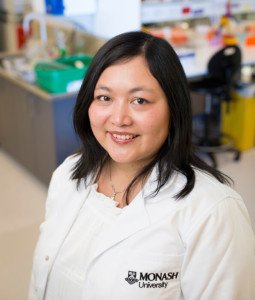You have returned to the top of the page.
Determine the effects of exercise alone +/- systemic therapy on tumour response, metabolic effects, tumour transcriptome and circulating biomarkers in ER+ve and ER-ve PDX models. Determine the effects of exercise on immunological and metabolic responses, cytokines, tumour vascular density and circulating biomarkers in immunocompetent (MMTV-PyMT) mouse tumour models. To determine the feasibility of a graded exercise program in patients with early breast cancer during the administration of adjuvant chemotherapy or ET.
Millions of women with a type of breast cancer fuelled by the female hormone estrogen have benefited from treatments such as tamoxifen and femara, which in most cases successfully prevent breast cancer returning later in life.
However, a third of these hormone-driven breast cancers develop resistance to preventative treatments and the cancer becomes metastatic, spreading throughout the body.
Treatment resistance is the highest cause of mortality in breast cancer. It’s vitally important to prevent this metastatic stage of breast cancer but as yet there are no effective tests or personalised therapies that can identify or help these women and men.
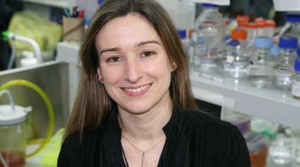
Dr Liz Caldon
NBCF-funded Dr Liz Caldon believes that the survival and quality of life would improve significantly if it was possible to predict from the first diagnosed cancer whether it is likely that someone’s cancer will recur, and then treat any recurrence with drugs that are specifically toxic to hormone resistant breast cancer.
But first she is focusing on improving our understanding of hormone resistant breast cancer, specifically the molecular changes that occur as the cancer cells develop resistance, including which genes might be involved.
With this knowledge she and her team will design better predictive tests that detect the presence of resistant cancer cells well before they start to grow as a secondary cancer. They will also determine if these cells have any particular qualities that mean they could be specifically targeted and destroyed during therapy.
Ultimately, this research project aims to eliminate the development of resistance to treatment and stop recurrence from ever happening, providing hope for women and men with hormone resistant breast cancer.
Thanks to medical research it’s now widely recognised that harnessing the immune system is a powerful way to target and kill cancer.
Patients with high levels of immune cells within their tumour respond better to both standard therapies (radiotherapy and chemotherapy) and therapies designed to enhance the immune response against cancer (immunotherapy). However, many patients don’t have immune cells in their tumours so these treatments are not very effective, and more research is needed.
One potential strategy for these patients is the use of white blood cells which are genetically engineered to eradicate cancer cells. These cells, called ‘chimeric antigen receptor T cells’ (CAR T cells), are very effective in blood cancers but don’t work well in other cancers including breast cancer.
One reason for this is because cancer produces adenosine, a substance which has a powerful ability to suppress the immune system. It creates an environment designed to switch off immune cells, giving the cancer plenty of opportunity to grow unchecked.
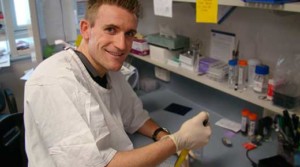
Dr Paul Beavis
In a four-year NBCF-funded study, Dr Paul Beavis aims to reprogram the CAR T cells to block the effects of adenosine, so the immune system can recognise, find and destroy any cancer in the body.
The adenosine pathway is most relevant in triple negative breast cancer which is the most aggressive and hardest to treat subtype. Development of a successful immunotherapy would be a significant breakthrough and would have a huge impact on the lives of women diagnosed the disease, and particularly for those with triple negative breast cancer.
Of the more than 16,000 Australian women diagnosed with breast cancer each year about 15 per cent, 2400 women, have a sub-type of the disease called triple negative breast cancer.
Women with triple-negative breast cancer have less treatment options and poor outcomes compared to women with other type of breast cancer, so there is an urgent need to improve treatment methods.
Chemotherapy is a component of treatment for many types of breast cancer, but it is the only effective treatment for triple negative breast cancer. It is a powerful tool; however it has undesirable side effects and can become less effective over time if tumours develop resistance, causing patients to relapse even if their initial treatment was effective.
Many chemotherapy drugs work by damaging the DNA of the cancer’s cells. Some tumours can reverse the effect of the treatment by repairing the damage and continuing to divide and grow.
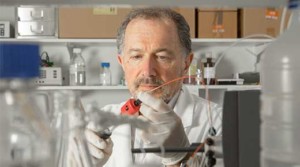
Professor Robert Baxter
A promising approach to treating drug resistance is to prevent the cancer cells from repairing the damage caused by the drug. Professor Rob Baxter and his team have discovered a previously unknown way in which triple-negative breast cancer cells can repair DNA that has been damaged by chemotherapy.
The aim of this project is to learn more about this process and discover how to prevent it. Ultimately, the aim is to develop a new treatment that would allow chemotherapy to work more effectively, improving survival for many women with triple negative breast cancer.
Early detection increases the likelihood of breast cancer survival. While population-based breast screening provides the best chance of early detection, it doesn’t provide all women the same level of detection.
Unbeknownst to many women, the density of their breast tissue can impact on the ability of the mammogram to detect tumours. Dense breast tissue is coming to light as one of the strongest predictors of breast cancer risk – on par with carrying a mutation in the BRCA1 and BRCA2 genes.
On a mammogram, the white sections indicate dense breast tissue. Tumours also show up as white and can be obscured if a woman has dense breast tissue. If the mammogram is unable to distinguish a cancerous tissue from healthy dense tissue, tumours can go undetected.
It is becoming increasing clear that women need to be told about their breast density, both because of the impact of dense breast tissue on the effectiveness of a mammogram in finding cancer and because of the increased risk of breast cancer arising from high density.
Measuring breast density is on the cusp of becoming a useful health tool for women, however, more information is needed before it can be incorporated into public health programs.
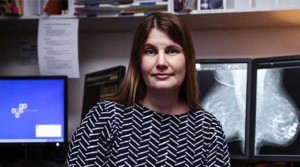
Dr Jennifer Stone
In conjunction with BreastScreen WA, one of the only state-funded screening programs which informs women of their breast density, Dr Jennifer Stone aims to find out what women do with this information. She will survey women who receive the information about breast density and those that do not, to quantify perceptions, intentions and post-screening behaviour.
This study will be the largest and most comprehensive investigation thus far of the impact of informing screening participants that they have dense breasts and will provide the basis for BreastScreen programs to report measures of breast density to participants in future.
Dr Stone will also investigate the prevalence of dense breast tissue in specific populations, including Aboriginal women (for whom no information currently exists) and younger women (an established risk factor), to help inform public health improvements for these women.
Triple negative breast cancer is more aggressive than other breast cancer subtypes and is more likely to spread to other parts of the body faster. It is also the most difficult type of breast cancer to treat.
Once the cancer spreads – a process called metastasis – the survival outlook falls dramatically, but at present, doctors have no way to predict which patients’ breast cancer will metastasise.
Many triple negative breast cancers have high levels of two particular proteins which are known to promote the spread of cancer cells. This NBCF-funded study aims to determine if extremely high levels of these proteins can be used to identify the patients whose disease is more likely to spread.
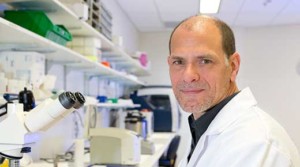
Dr Normand Pouliot
A second focus of the study is to test a new strategy for treating triple negative breast cancer. Unlike other subtypes of breast cancer, there are no therapies specifically tailored for triple negative. Chemotherapy is the only treatment option and it is not very effective once the cancer has spread.
Dr Normand Pouliot aims to see if standard treatments that are being successfully used for other types of breast cancer (such as tamoxifen) can be made to work against triple negative as well.
He will test if blocking the two proteins found in triple negative with novel inhibitors, allows standard treatments to work and stop the growth of the cancer cells.
The combined approach of this project could point to early indicators and more effective treatment of patients with aggressive triple negative breast cancer – two potential breakthroughs that could save the lives of many women in future.
With 53 Australians being diagnosed with breast cancer every day and over 3,000 dying from the disease each year, there is an urgent need to reduce the numbers of women developing breast cancer in the first place.
There are many ways that women can reduce their risk of developing breast cancer and it’s important that these options are known and available across the entire population, regardless of geographical or socio-economic situation.
As an NBCF-funded fellow, Professor Kelly-Anne Phillips has developed a web-based tool called iPrevent which is designed to help all Australian women to know and appropriately manage their personal breast cancer risk.
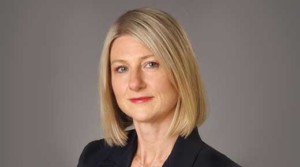
Professor Kelly-Anne Phillips
NBCF has now provided additional fellowship funding to complete the testing and roll out of iPrevent so that women and their doctors can work together to try to  prevent breast cancer.
Professor Phillips will also seek information directly from women and their clinicians about why some women do not utilise breast cancer prevention and screening options. Understanding these barriers is the first step to breaking them down and will enable more women to access the benefits of 21st century breast cancer prevention knowledge.
In addition, this far-reaching research fellowship includes studies of medications that might prevent cancer or stop it returning in women who have increased breast cancer risk because they have abnormalities in the BRCA1 or BRCA2 gene. Two of these studies will help work out whether tamoxifen and aspirin respectively can prevent cancer in women with these gene abnormalities. Another study will see if the drug olaparib can help stop breast cancer returning if it does occur in these women.
Professor Phillips will also continue to lead the Australian arm of a huge international study looking at lifestyle risk factors for breast cancer risk and aimed at further refining current methods of assessing a woman’s risk of developing the disease.
This broadly collaborative, multidisciplinary research program builds on almost 20 years of clinical and research contributions by Professor Phillips who is dedicated to helping women to reduce their risk of developing breast cancer.
Genetic services and familial cancer centres across Australia investigate women and their families when there is an evident inherited predisposition to breast cancer, due to a family history of cancer for instance.
Primarily the doctor is looking to see if these women have mutations in the BRCA1 and/or BRCA2 genes – genes that have been specifically linked to breast cancer risk. However, most of these women do not have mutations in either of these genes.
Mutations in other genes having been recognised as playing a role, especially in cases where breast cancer is diagnosed at an early age. Until recently however, tests have been conducted one gene at a time, at very high cost. The testing process is slow and laborious, and most test results remain uninformative, despite great advances in research into breast cancer predisposition.
The revolution in our capacity to conduct genetic analyses in very recent years has had a profound impact on how genetic testing services can be applied. New technology is enabling multiple genes to be screened for mutations in a single test, at considerably reduced cost
However, the choice of genes to include in panel testing needs careful consideration. Around 20 genes are currently included in commercial panel tests.There is very little known about these additional genes or whether they are actually associated with breast cancer risk. Essentially the information in the report beyond BRCA1 and BRCA2 is not useful to either the patient or the doctor and is ignored.
There is an opportunity to make genetic tests an even more powerful tool in determining women’s genetic risk of developing breast cancer by ensuring the cutting-edge technology is providing only clinically useful information.
NBCF is funding a research project aimed at better understanding the genes used in genetic tests to maximise the potential of genetic testing and ensure better outcomes for women.
In this project, Dr Tu Nguyen-Dumont will analyse vast libraries of genes to determine whether the genes that are on the test are connected to breast cancer, and whether newly discovered genes should be added to the test.
The aim is to make genetic testing more comprehensive with the ability to identify genes beyond BCRA1 and BRCA 2 that also point to a woman having a higher risk of developing breast cancer.
With more information these women and their families can be better informed about their situation and make choices that could prevent them ever having to deal with predictable breast cancer.
Many breast cancer patients need to take chemotherapy drugs for a long period of time, such as tamoxifen which is usually prescribed for five years.
To achieve the best results from chemotherapy it’s necessary to correctly balance the level of the drug in the body by changing the dose on later cycles. Patients need sufficiently high enough doses to kill their breast cancer cells but not too high that they are unable to cope with the harsh side-effects.
However, each person will take to chemotherapy differently based on factors such as body size, age, other drugs and foods they are taking and how hard their kidney and liver work hard to flush foreign toxins. Current standard practice for measuring the correct dose doesn’t take all these factors into account, resulting in imprecise dosing for individual patients. Some may receive doses of chemo that are too toxic for their body, and some may receive too little to be effective.
A blood test can help determine the right dose; however going into the clinic for a blood test can be cumbersome and inconvenient for women with breast cancer. On a national scale drawing blood samples and transporting them around Australia to labs for analysis is logistically unfeasible for the health system.
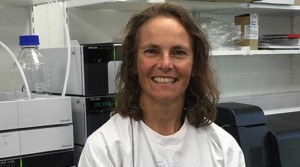
Professor Jennifer Martin
NBCF is funding Professor Jennifer Martin’s project which aims to develop a new way of measuring the right dose for each person, which is similar to the finger prick blood test diabetics take several times a day to check their glucose levels.
This finger-prick blood sampling method could be done by health professionals who administer chemo at clinical facilities right across Australia, including remote and regional areas. The test would provide instant information on chemotherapy levels in the blood to assist in accurately tailoring the dose for each individual.
For patients already being treated, the test would also help determine if their dosage needs tweaking to get the best effect from the treatment while minimising side effects.
Achieving appropriate doses of chemotherapy in patients with breast cancer will contribute to improved management of breast cancer care, leading to better survival and better quality of life.
Improved early detection is a critical step in improved outcomes from breast cancer and BreastScreen Australia runs a breast screening program which is proven to reduce deaths from breast cancer.
The screening program schedules all eligible women for a mammogram every two years. However, not every woman has the same level of risk of breast cancer. Some women have a very low risk and some women have a higher risk so this fixed schedule may not detect any tumours early enough.
As our understanding of the risk factors for breast cancer increase – such as family genetics, breast density, obesity and other lifestyle factors such as alcohol – more powerful information could be incorporated into the screening process to provide a better understanding of a woman’s likelihood of developing breast cancer.
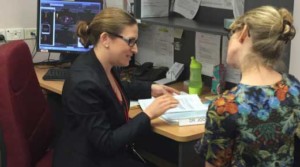
Dr Jocelyn Lippey
Cancer Australia is working on an improved breast screening program that includes these risk factors. This program will first require a trial of Australian women requiring breast screening to determine its suitability for nationwide adoption.
The success of the trial relies on women participating. The challenge is that with more information being collected and analysed by the new screening program, there may be significant changes to what women usually expect from their routine mammogram.
For example, as a result of her reviewing her risk of developing breast cancer, a woman’s routine screenings may be recommended to be more frequent if she is determined to be at high risk, or less frequent if she is low risk.
This type of divergence from current screening practice may be unsettling for women involved. How such a change in relation to their level of risk is communicated to women by healthcare providers is crucial to ensuring participation in the trial.
Women considering participating will need to fully understand any change to their schedule and feel confident that they are still receiving best-practice screening for breast cancer.
NBCF supports this initiative and has funded Dr Jocelyn Lippey to consult with women and healthcare providers on the most effective way to encourage women to participate in the trial.
Her study will ensure both women and their healthcare providers have the communication tools to understand what the tailored screening trial and subsequent nationwide program will involve, how it will run and what it can achieve, to give the trial and the subsequent program the best chance of being successfully implemented.
